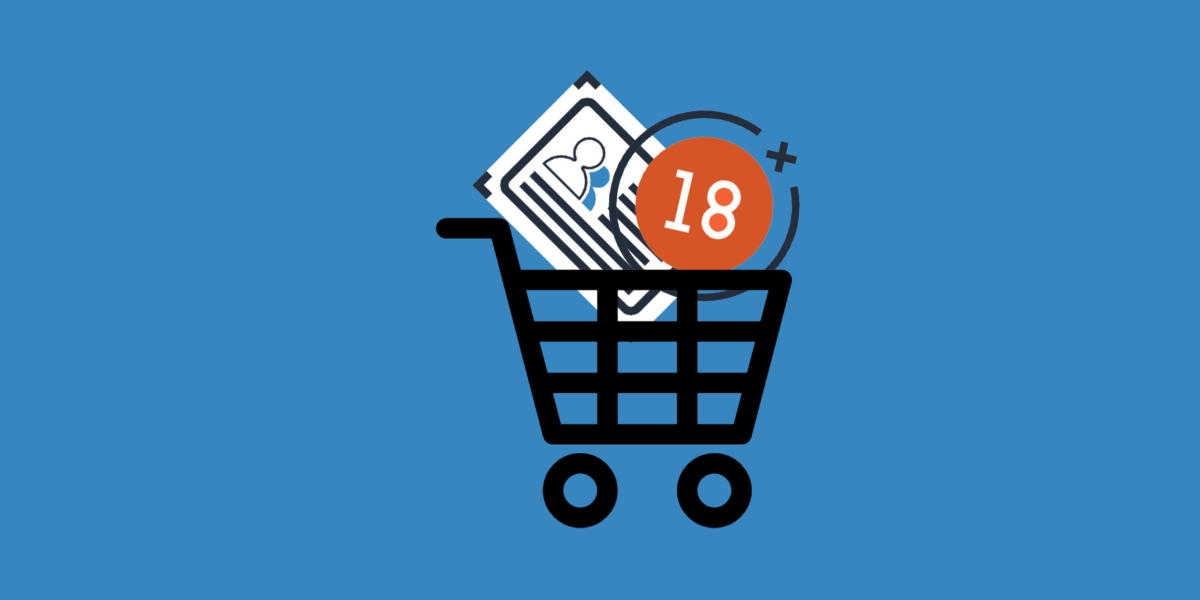The Internet needs better age enforcement
Amazon is an incredible service. Using Amazon Prime, you can order virtually anything to your doorstep within an hour. Even smaller e-commerce sites are wielding innovations in drop shipping and transportation providers to deliver consumer products within one or two days at a low cost — taking their lead from Bezos’ brainchild.
The Internet is a much different place than when Amazon first got its start as a humble online bookseller, though.
The ubiquity of e-commerce has transformed the Internet into a liquid economy of everything imaginable. But many standards tarry behind the Internet’s accelerating pace of change. Some of those collateral effects have manifested themselves as an acute inability of legal enforcement in specific markets.
AgeChecker, a promising new age enforcement drop-in solution for e-commerce platforms, plans on changing that and might be the standardized tool the Internet needs.
Markets That Increasingly Require Age Enforcement
If you ask a high school parent what their biggest adverse influence concern is regarding their children, the answer will likely be vaping. Roughly seven in ten teenagers are exposed to e-cig and other vaping advertisements, which is driving the epidemic of close to one in five 12th graders vaping.
The government has taken notice, preparing for a suite of enforcement that follows in the footsteps of a pair of regulations that raised the tobacco purchasing age to 21 and curtail non-verified ENDS products.
However, the Internet is a vast, uncensorable amalgamation of unbiased protocols and very biased applications layered over them. E-commerce today enables any teenager to order from a veritable potluck of vaping products on sites that don’t hew the parental or regulatory enforcement policy.
They may not deliver within one hour like Amazon, but the questionably sourced oils still arrive within days to a doorstep — sometimes even in covert packaging to hide the products from parents.
“Kid-friendly marketing and vape flavors (e.g., a flavor that mimics a popular kids cereal brand, candy, or the like) have long been prohibited, but exist nonetheless, and are thus listed as another major policy directive,” details one of AgeChecker’s blog posts. “Statistics show that the most popular vape devices among youths are cartridges and pods, launching those products to the top of the policy’s priority list.”
The Internet’s vastness and virtual inability to enforce blanket legislation to e-commerce platforms make tackling such flavored vape sales an arduous task.
Beyond e-cigs (either marijuana or nicotine) numerous Internet company innovations are putting age-restricted items at the fingertips of teenagers. From apps like Drizly for alcohol (where age verification relies on the nonchalant driver) to the purchase of CBD oils and firearms on digital marketplaces, age verification is a progressively severe problem.
That’s where standardization is vital. Tackle technology with simplicity and the solution may present itself. At least, that’s what AgeChecker is betting on.
Standardizing Age Verification Should Be a Goal of The 2020s

As more and more commerce continues to move online to the WooCommerce shops and boutique retail outlets selling exclusive items, age verification becomes more important.
Before the internet, we relied on individual discernment of age via IDs presented to a store clerk. Admittedly, these could be fake, but it’s harder to trick the gas station attendant than some e-commerce store selling knock-off Juuls that either doesn’t care about your age or feigns ignorance.
Banning vaping isn’t an optimal solution. Standardizing the verification of age is the better route.
Similarly, banning gun sellers will inevitably lead to sketchier marketplaces for minors to purchase them outside of the government’s watchful eye. Financially disincentivizing e-commerce stores from selling to underage minors, whether guns, marijuana pens, or e-cigs (nicotine), is a path worth pursuing.
AgeChecker accomplishes such a vision by functioning as a universal drop-in solution for e-commerce platforms like WooCommerce, Shopify, Magneto, and more. The vast majority of online stores, whether small or large, use these platforms for directly reaching consumers.
That trend will only continue to balloon too, as e-commerce sales are expected to hit $4.8 trillion next year.
Importantly, standardization typically only ensues when a palpable demand meets a product that does not sacrifice the bottom line of companies. Blanket government regulation does the latter by hampering small businesses, but AgeChecker does not affect e-commerce stores negatively.
For example, verification is cross-referenced with public records, cannot be gamed by a teenager (like at a 7-11 with a fake ID), and concludes 90 percent of the time within ten seconds. It’s a win-win for nearly all e-commerce platforms selling age-restricted items. Maybe not the ones that seek to circumvent regulatory guidelines to inflate profits, but those stores will quickly come under the microscope should AgeChecker be adopted as a standard.
When Amazon began dominating e-commerce, age-verification wasn’t really at the forefront of digital commerce concerns. The great part about the Internet is that it subtly reveals what aspects of its core functionality need to be revamped — gradually.
With vaping a full-scale epidemic, illegal opioid purchases fueling a national crisis, and gun sales to minors trivial, it’s time for an age verification standard in the world of e-commerce.
Otherwise, without a tool like AgeChecker, the next iteration of Amazon Prime may be an illicit copycat from a foreign country that doesn’t care about the health and safety of America’s youth.
